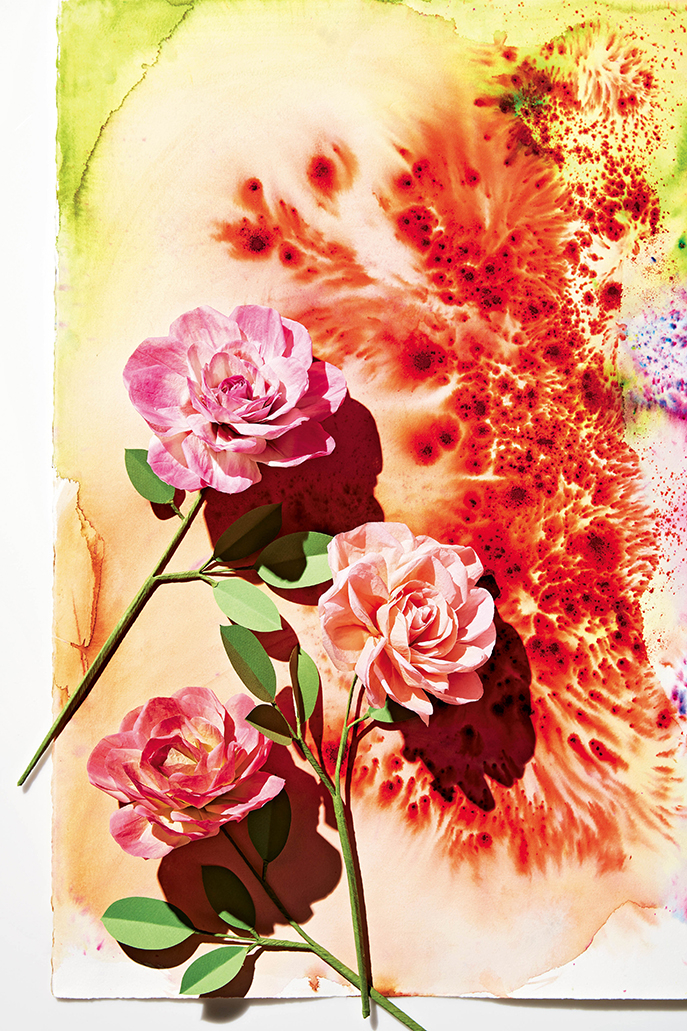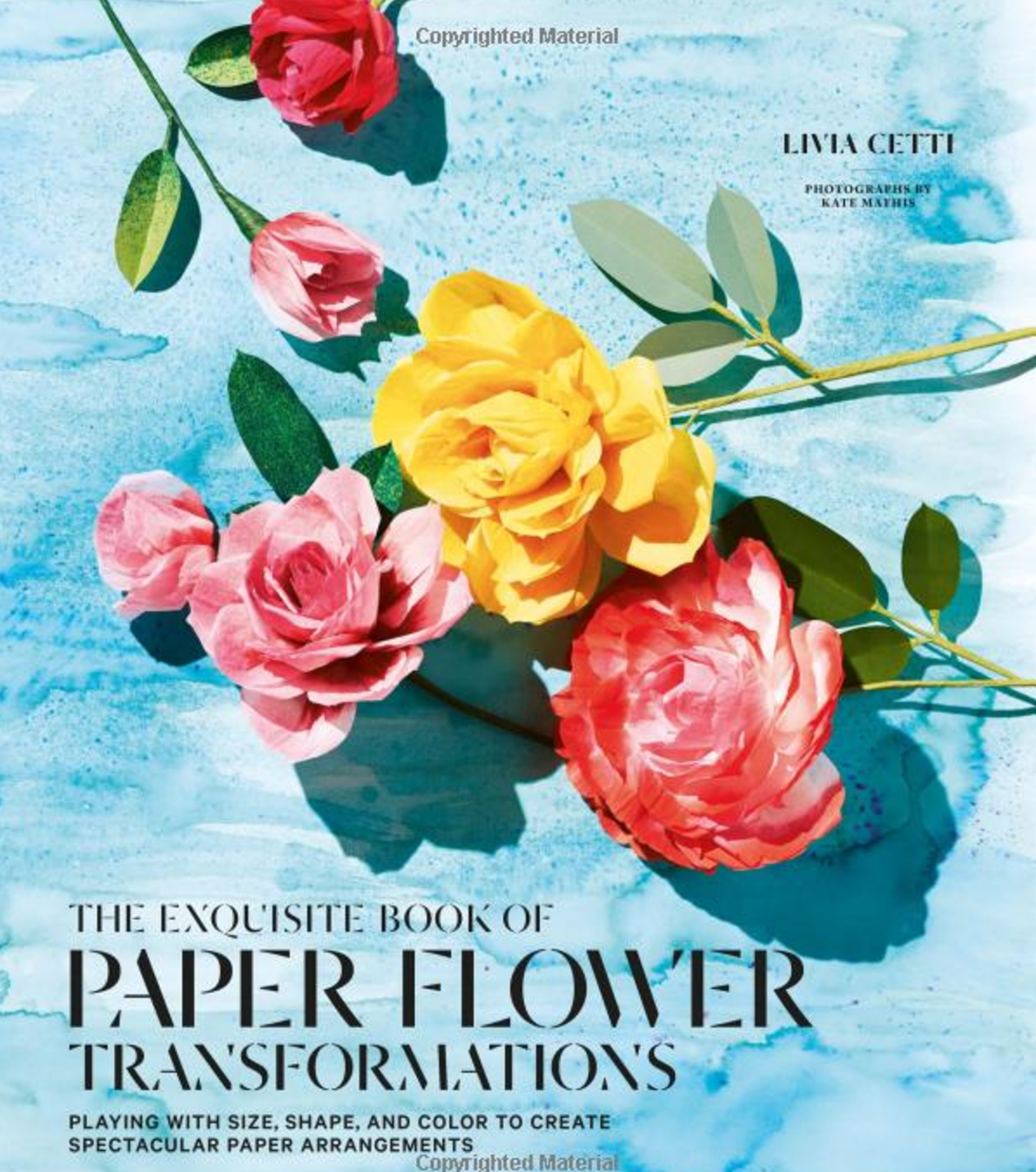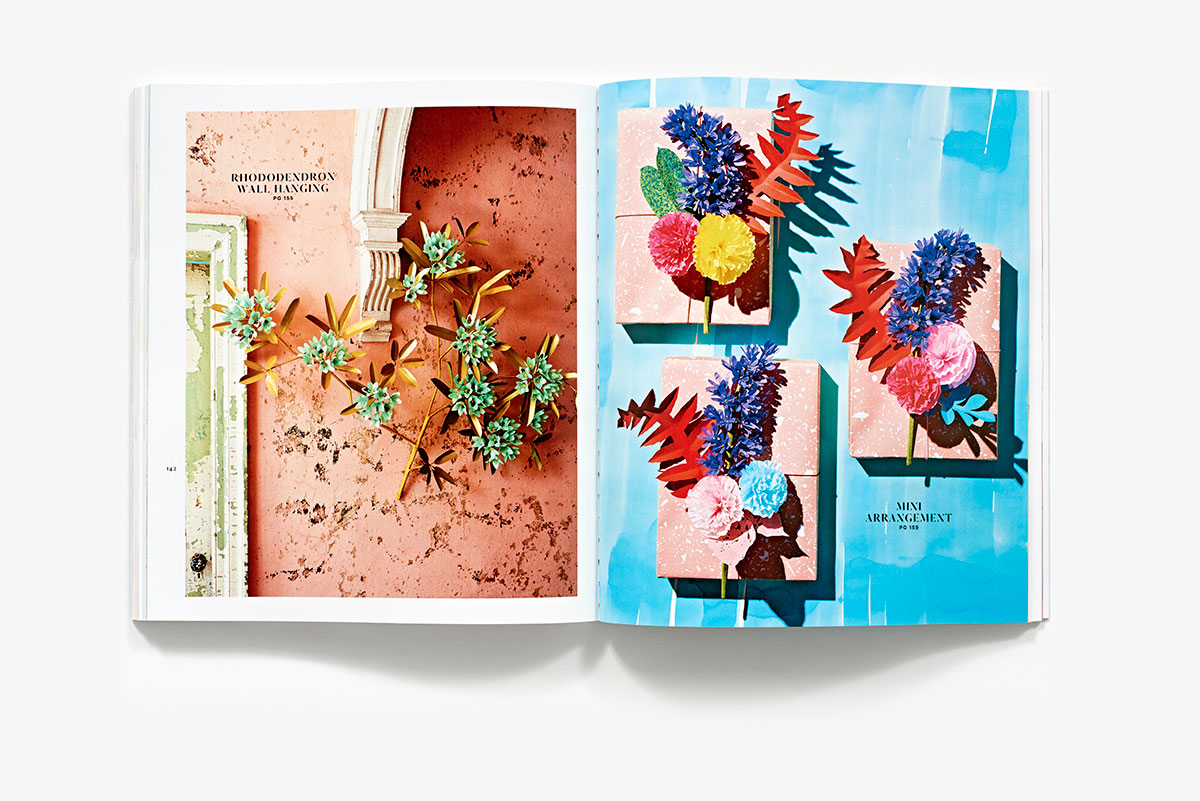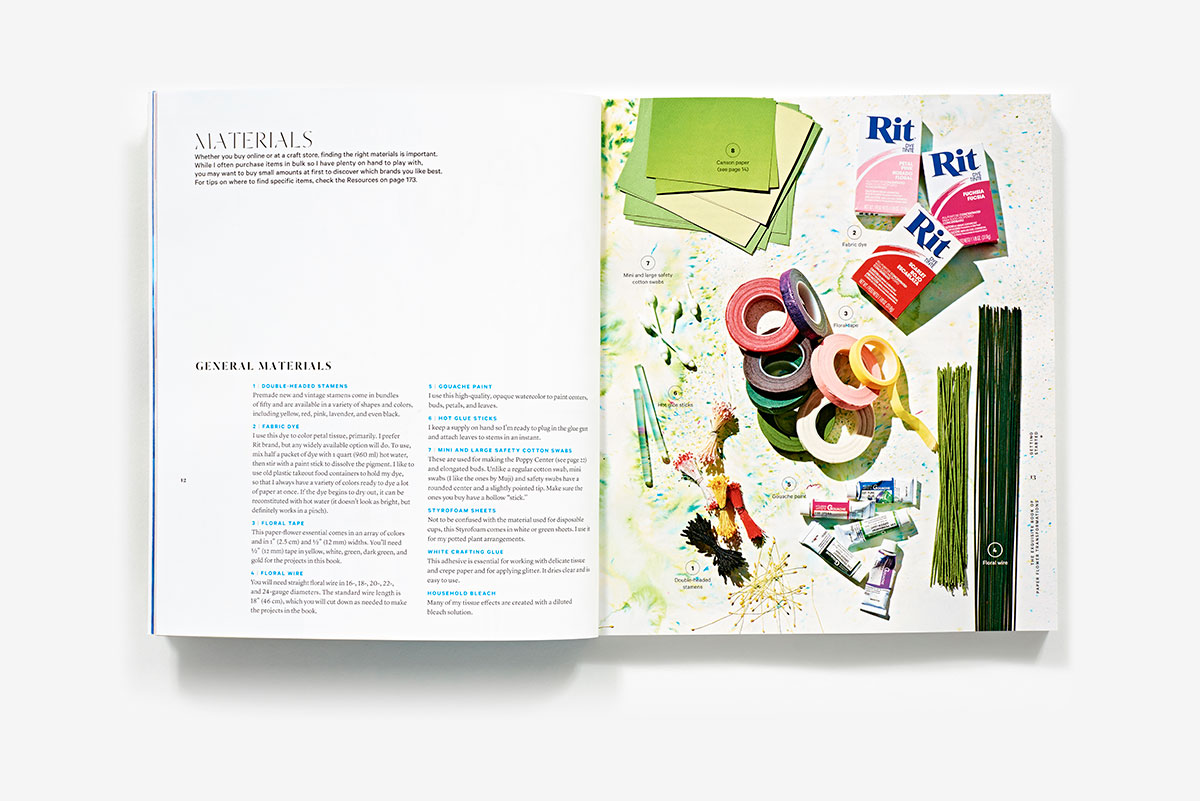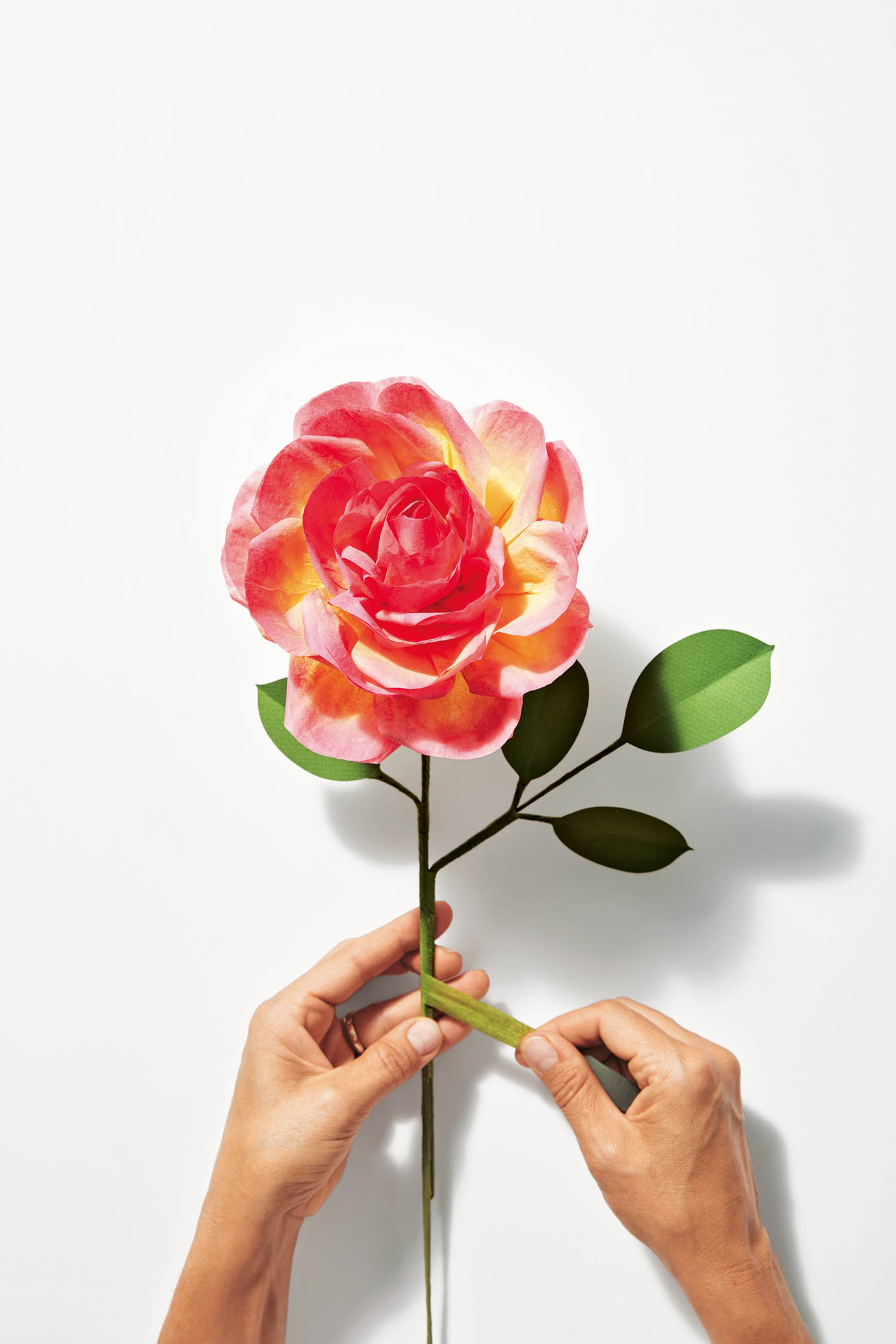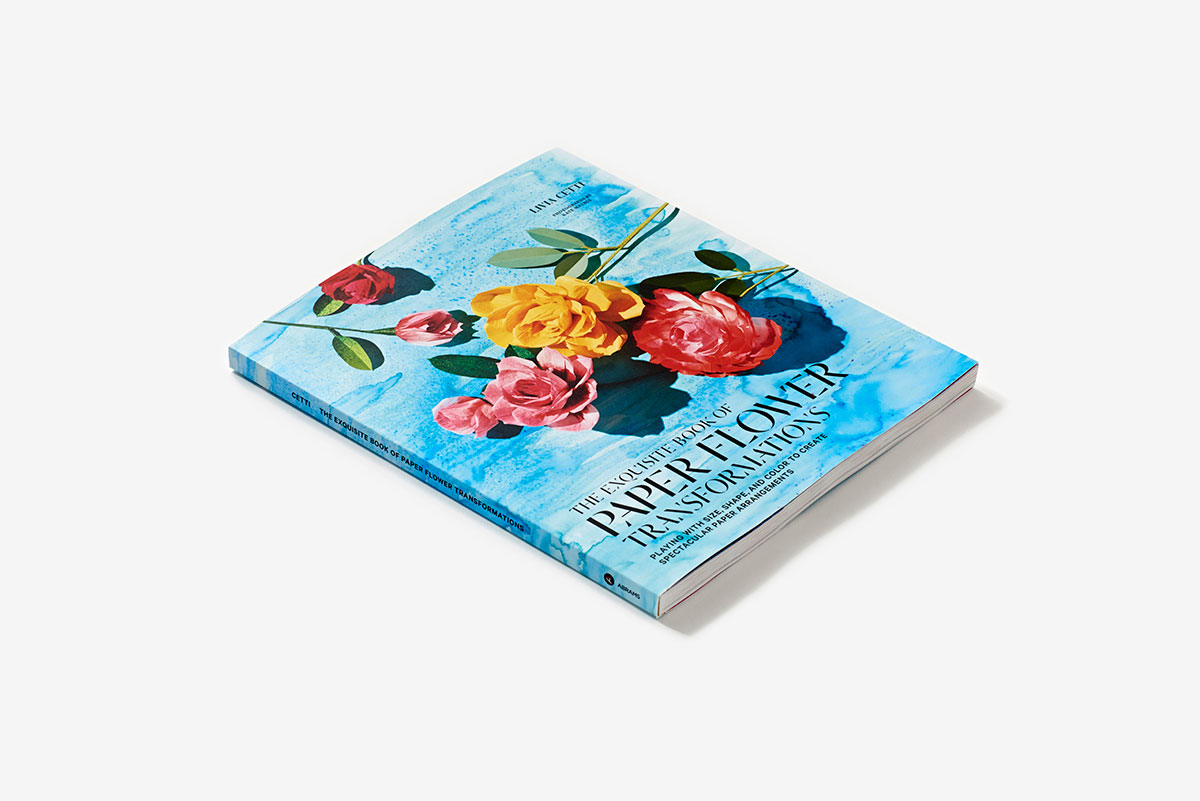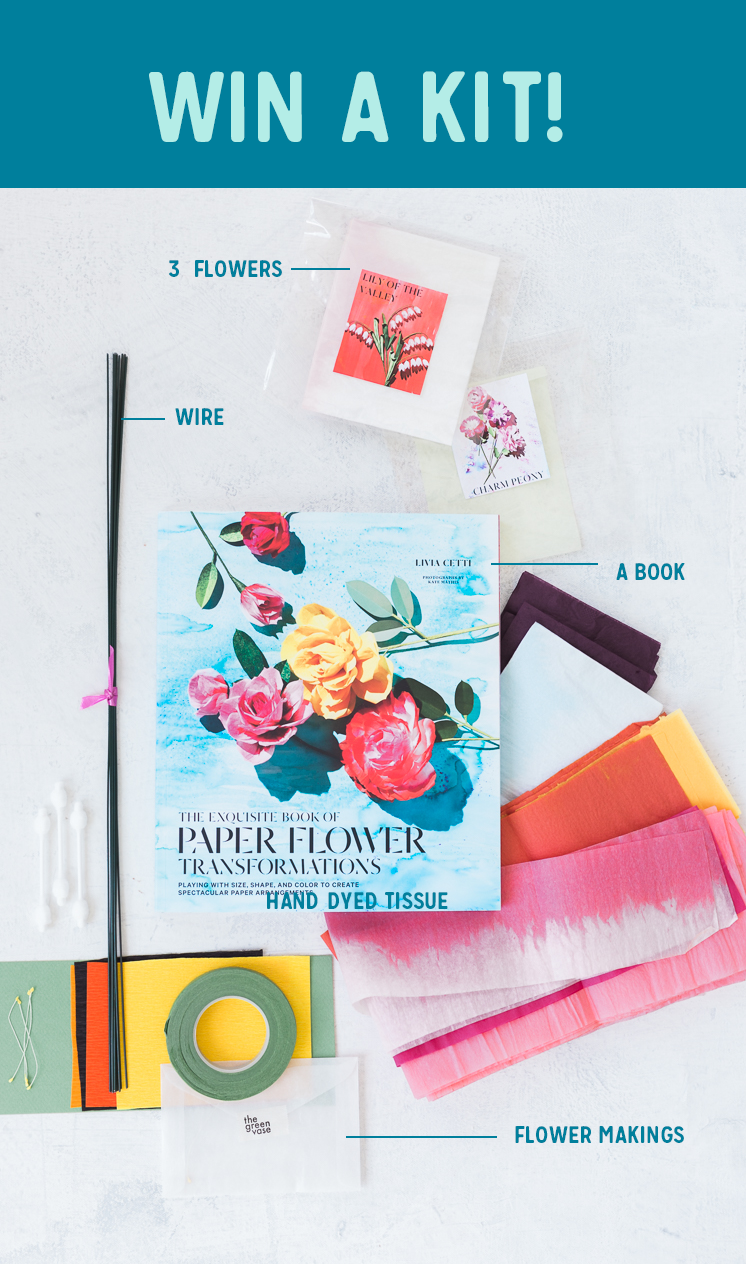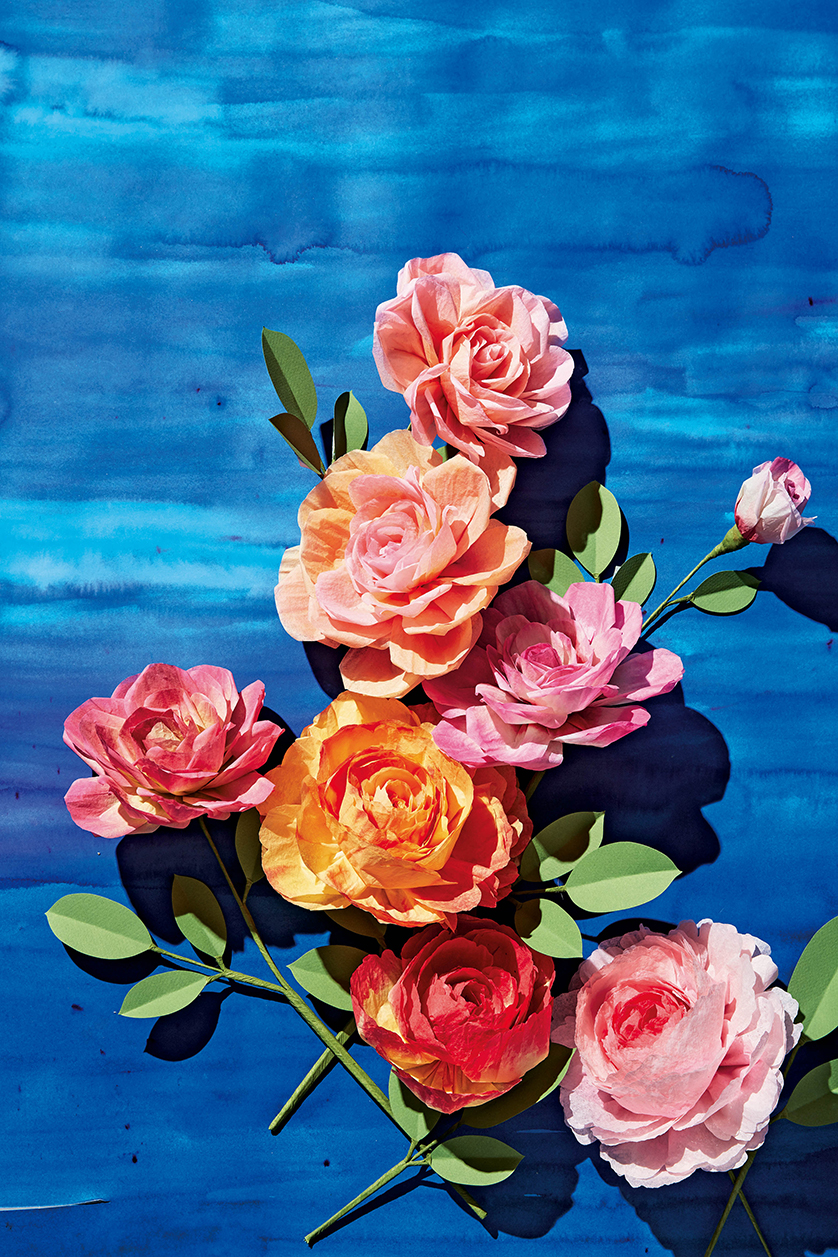
Livia Cetti is the Fairy Godmother of paper flowers. She is one of the original paper flower artists and her work never fails to showcase her expertise. Her new book, The Exquisite Book of Paper Flower Transformations, which is available to purchase TODAY, is no exception! The vibrant colors and bold designs took my breath away. We are lucky enough to share with you one of Livia’s beautiful flower designs, and show you how to make an Eden Rose here on the blog! Hopefully, this will give you a taste of the magic that is her book and encourages you to run and snatch a copy.
These flowers are beautifully realistic and you can make them in a variety of sizes, which makes them perfect for a spring centerpiece for Easter, Mother’s Day, or bridal/baby showers. But honestly, even if you have no intention of making paper flowers, this book is worth the purchase just for the eye candy!
Read on for step-by-step photos for the Eden Rose!
How to Make an Eden Rose
*Finished size is approximately 13″
Free Templates HERE
GENERAL MATERIALS
- Scissors
- Green floral tape
- 18″ (46 cm) length 18-gauge reinforcement wire
- Wire cutters
FOR PETALS
- Six 3″ x 20″
- (7.5 x 50 cm) strips yellow tissue paper, dip-dyed fuchsia (see page 16)
FOR EDEN ROSE CENTER (LARGE BUD BALL)
- 20″ x 30″ (50 x 76 cm) sheet yellow tissue paper (or use leftovers from the petals)
- One 18″ (46 cm) length 18-gauge pretaped wire
FOR LEAVES
- 19″ x 25″ (48 x 63.5 cm) sheet green Canson paper
- Hot glue gun
- Hot glue sticks
- Four 9″ (23 cm) lengths 18-gauge pretaped wire
- Four 1⁄2″ x 2″ (12 mm x 5 cm) pieces light-green tissue paper
1. PREPARE MATERIALS
Photocopy or trace the Eden Rose Small, Medium, and Large Petal templates on page 169 and cut out the petal shapes. Cut thirty-four 3″ x 3″ (7.5 x 7.5 cm) pieces from the tissue paper strips. Stack the pieces into 2 piles of 12 and 1 of 10, and place the small petal template on one stack of 12 so the top of the petal is at the dip-dyed edge of the paper. Trace the template onto the tissue and cut it out to make 12 small petals. Repeat with the medium and large petal templates for the remaining stacks, tracing and cut- ting 10 medium and 12 large petals, for a total of 34 petals.
Construct a large bud ball to use as the center follow- ing the instructions on page 24. Place a reinforcement wire alongside the bud stem and insert the top of the wire into the base of the bud. Attach it by wrapping it with oral tape the full length of the flower stem.
For the leaves, photocopy or trace the Eden Rose Leaf templates on page 169 and cut out the leaf shapes. Trace 2 small and 2 large leaves onto the green Canson paper and cut them out. Assemble the leaf stems following the instructions on page 27.
2. CREATE DOUBLE-PETALS
Place 1 small petal on top of another, then fan them apart 1⁄2″ (12 mm) to make a double-petal. Using the edge of a closed pair of scissors, shape the top edge of three of the double-petals, creating a gentle curl inward (see page 25). To give the small double-petals a cupped shape, add a dart (see page 25). The 3-point fold for the dart should extend from the bottom of the petals to 1⁄2″ (12 mm) from the top. The base of the dart fold should measure about 1⁄4″ (6 mm) across and taper to
a point. Gently gather the base of each small double-petal to give it a cupped shape. Repeat with the remaining small petals to make a total of 6 small double-petals.
Place 1 medium petal on top of another, then fan them apart 1⁄2″ (12 mm) to make a double-petal. Using the edge of a closed pair of scissors, shape the top edge of the double-petal, creating a gentle curl outward (see page 25). To give the medium double-petals a cupped shape, add a dart as above. Repeat with the remaining medium petals to make a total of 5 medium double-petals.
Create 6 large double-petals in the same manner used for the medium double-petals, curling and darting as you did above.
3. CONSTRUCT BLOOM
Place the first small double-petal at the base of the large bud ball center, positioning it so that the petal obscures the top of the bud ball center. Position a second small double-petal opposite the first petal at the same angle so that the first petal swirls inside of it to create a pleasing, spiraled center. Secure both petals in place with oral tape, wrapping the tape down and around the wire twice, to about 1⁄2″ (12 mm) below the base. Where you begin to wrap the tape is the tapeline. Repeat with the remaining small double-petals to encircle the center tightly; make sure to begin taping each at the tapeline that you established with the first set.
Place the gathered end of one medium double-petal opposite the base of the last small double-petal. The top of the petal should be 1⁄4″ (6 mm) above the small double-petal center you just created. Because these petals are darted and curled, they create the center volume of the rose. Add the remaining medium double-petals, gradually encircling the center and turning the bloom with the addition of each petal, spacing them to create a full, round shape.
Attach the large double-petals in the same manner as the medium. There should be no sparsely petaled areas. Flute the layers of petals to open the bloom. Bend the flower stem forward at a 30-degree angle at the base of the bloom.
4. ASSEMBLE THE STEM
Bend the first large leaf stem at a 60-degree angle and attach it 3″ (7.5 cm) below the flower base. Bend two small leaf stems at 60-degree angles, and attach them to each side of the remaining large leaf to create a leaf cluster. Attach the leaf cluster to the opposite side of the main stem 11⁄2″ (4 cm) below the first leaf. Using wire cutters, trim the flower to the desired length. Turn the flower upside down and wrap the cut stem end with floral tape to finish.
You can find Livia’s book, The Exquisite Book of Paper Flower Transformations, on Amazon today! And head over to Instagram for a special giveaway today!



